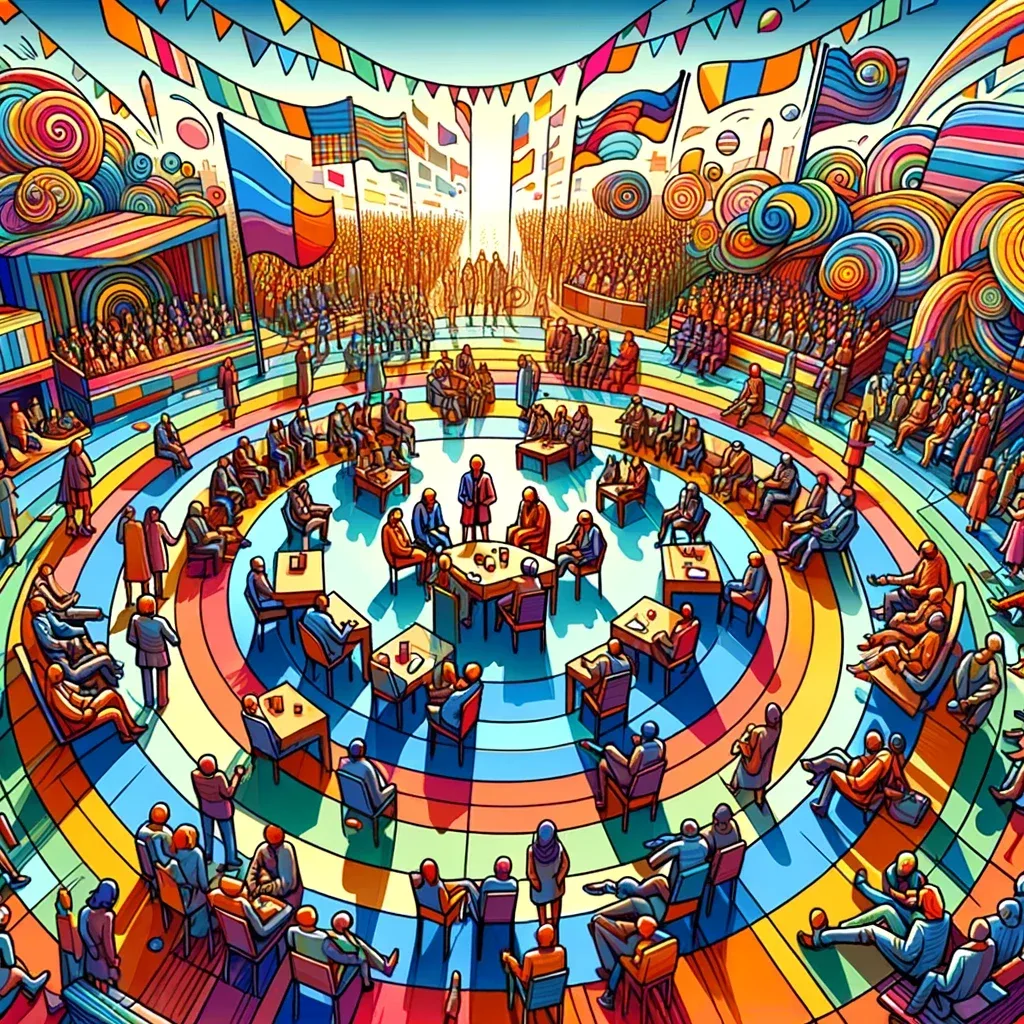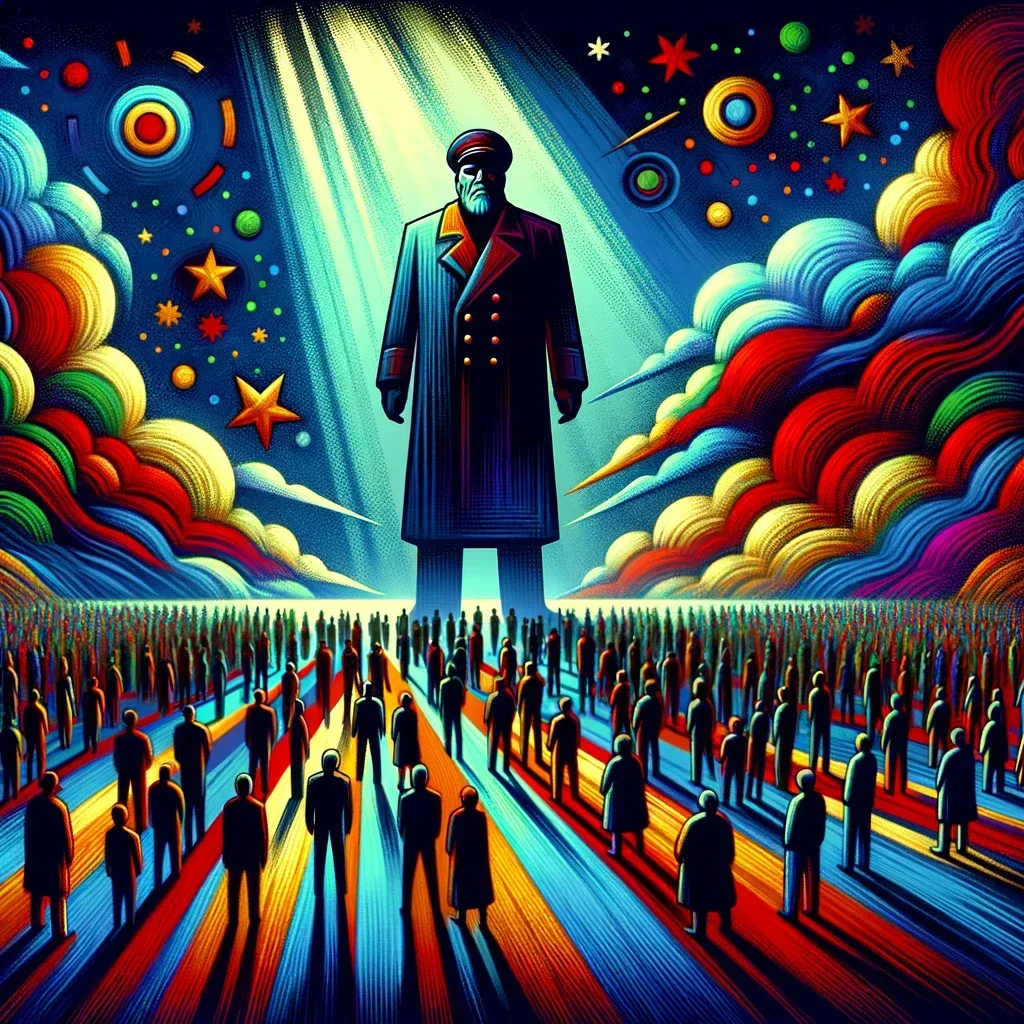Hannah Arendt, one of the most influential philosophers of the XNUMXth century, deeply explored the nuances of power and violence in her works. Her thinking, marked by an acute analysis of political phenomena, offers a distinct understanding of the interaction between these two forces. In this article, we will examine in detail Arendt's perspective on the relationship between power and violence, unveiling the key aspects of her thinking and their relevance in the contemporary political scenario.

Power and Violence: A Fundamental Distinction

Arendt's Concept of Power
For Arendt, power is essentially a social phenomenon that emerges from collaboration and mutual consent between individuals. She sees power as something that exists only in action and when people come together to act together in pursuit of common goals.
Differentiation between Power and Violence
Arendt makes a clear distinction between power and violence. While power is a positive force that arises from collectivity and agreement, violence is an act of force that reduces others to the status of means to an end, often to the detriment of their will or consent.
The Origins and Limitations of Violence
The philosopher argues that violence has its roots in impotence. It is often employed when legitimate power fails or is absent. Unlike power, violence is instrumental and has inherent limitations, being unable to create lasting loyalty or cooperation.
Practical Applications and Policy Implications

Power and Revolution
Arendt explores how power is central to successful revolutions. She argues that revolutions that replace one violent regime with another fail to understand the true nature of power, which lies in the collective capacity to create and sustain political change.
Violence and Authoritarianism
Arendt's analysis of authoritarian regimes reveals how violence can be used to impose and maintain control. However, she points out that such control is inherently unstable, as it lacks the basis of consent that underpins true power.
Democracy and Public Space
For Arendt, democracy is the stage where power manifests itself in its purest form, through dialogue and collective action in public space. She sees active political participation as essential for maintaining and strengthening democratic power.
Contemporary Implications

Power, Violence and Social Movements
Arendt's theory of power and violence offers valuable insights for understanding contemporary social movements. She suggests that effective power arises from unity and collective action, while violence can be a sign of strategic weakness.
Global Challenges and Policy Responses
In the context of global challenges such as climate and political crises, Arendt's distinction between power and violence provides a framework for evaluating political responses and for seeking solutions based on consensus and cooperation rather than coercion.
Technology, Surveillance and Power
With the advancement of surveillance technologies, Arendt's analysis offers a critical perspective on how power and violence can be manifested and perceived in a digital age, highlighting the importance of preserving spaces for public action and discourse.
Conclusion
Hannah Arendt provided an insightful and timeless analysis of the dynamics between power and violence, which continues to be crucial for understanding complex contemporary political phenomena. Her emphasis on collective action and power as a constructive force contrasts sharply with the destructive and limited nature of violence, offering a hopeful and pragmatic vision for building a more just and democratic society.

Frequently Asked Questions about “According to philosopher Hannah Arendt, what is the relationship between power and violence?”
This FAQ seeks to clarify the main doubts about the relationship between power and violence according to Hannah Arendt, offering a detailed view of the complexities of these concepts in political philosophy.

1. How does Hannah Arendt define power?
2. What is the main difference between power and violence for Arendt?
3. How does Arendt relate violence to powerlessness?
4. What is the role of power in revolutions, according to Arendt?
5. How does Arendt analyze authoritarianism in relation to power and violence?
6. What is the importance of democracy and public space in Arendt's theory of power?
7. How do contemporary social movements relate to Arendt's ideas about power and violence?
8. How does Arendt address global challenges and political responses in terms of power and violence?
9. What is Arendt's view of technology, surveillance and power?
10. What is Arendt's criticism of punitive institutions?

This FAQ offers an in-depth understanding of Hannah Arendt's conceptions of the complex relationship between power and violence, providing a critical look at current and historical political issues.




